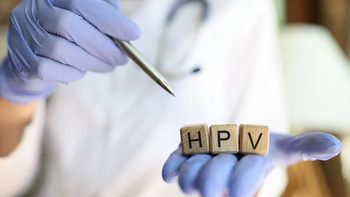HPV Awareness Day 2025: prevention strategies
March 4 marked World HPV Awareness Day, a prime opportunity to raise awareness of the impact of Human Papillomavirus (HPV), an extremely widespread infection that can lead to malignant lesions.

Epidemiological data and impact of HPV infection
HPV is among the most common sexually transmitted infections globally with more than 80 percent of the sexually active population coming into contact with at least one HPV genotype during their lifetime.
Although in most cases infection is transient and asymptomatic, some high-risk oncogenic strains, particularly HPV-16 and -18 genotypes, can result in persistent infections that can evolve into precancerous and cancerous lesions if not promptly detected.
HPV is the leading cause of cervical cancer, which is the fourth most common neoplasm among women globally, with more than 660,000 new diagnoses and more than 340,000 deaths each year.
In addition, growing evidence shows that viral infection plays a role in the onset of other cancers in the anogenital area (anus, vulva, vagina, and penis) and oropharynx, in both sexes, where an increasing trend is reported, particularly in high-income countries.
Prevention: an essential tool
Nowadays, vaccination constitutes one of the most effective tools for the prevention of HPV-related lesions in both sexes. Prophylactic vaccination has been provided with bivalent, tetravalent and now nonavalent vaccines for protection against the major oncogenic genotypes causing persistent infections and severe lesions. Cervical screening, offered free of charge to all women between the ages of 25 and 65, provides early detection of precancerous lesions, dramatically reducing the risk of later developing invasive cancer. Despite the proven efficacy and safety of the preventive strategies available today, vaccination coverage and adherence to screening programs remain far from the thresholds advocated by WHO for the elimination of cervical cancer as a Public Health problem and the prevention of HPV-related lesions.
Educating and raising awareness about the risks associated with HPV infection and possible prevention strategies is critical to reducing the number of infections and associated diseases. In order to heighten awareness about HPV and prevention strategies, the Italian Society of Hygiene (SItI) - Sardinia section organized a webinar on March 26 titled “HPV Awareness Day 2025. Parliamone, informiamoci, preveniamo!” involving experts in the fields of Public Health, Virology and Epidemiology. The meeting presented an up-to-date overview of the impact of HPV, preventive vaccination and screening strategies, and the remaining challenges in controlling the infection and related diseases. The discussion pointed out that despite progress, barriers to the uptake of prevention strategies persist, including low adherence to vaccine and screening programs and the burden of socioeconomic inequalities in gaining access to prevention services. This highlights the need to foster greater awareness in the population, counter vaccine hesitancy, and encourage adherence to screening programs. In fact, clear, evidence-based communication conveyed by health professionals can help overcome mistrust and cultural barriers, ensuring more equitable access to health protection interventions.
In the wake of this commitment, SItI Sardinia is sponsoring a new in-depth event with the SIMVIM congress “Prophylaxis of international travelers of all ages ... and more” (event poster attached), which will address the main issues related to the prevention of infectious diseases. One of the planned talks will be dedicated to the role of HPV communication, which is recognized as an essential tool for increasing awareness, fostering informed choices and improving adherence to prevention strategies. The goal is to bolster an integrated approach to Public Health, in which information, prevention and equitable access to health services contribute concretely to reducing the incidence of cervical cancer and other HPV-related diseases.
Only through coordinated efforts between institutions, the scientific community and the population will it be possible to move closer to the goal of cervical cancer elimination, as indicated by the World Health Organization (WHO) strategies.
Stay connected to our website so you don't miss upcoming updates.
* Edited by Dr. Narcisa Muresu - AOU-Sassari Director of Biology.



